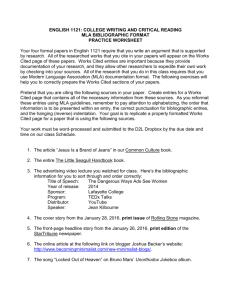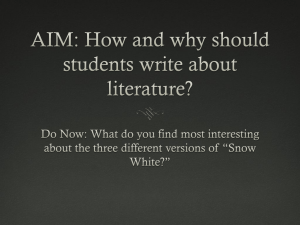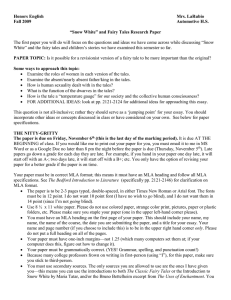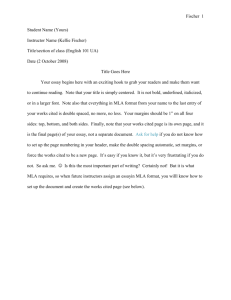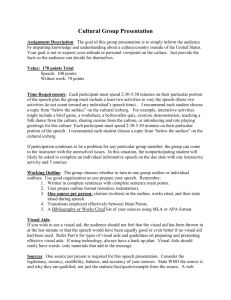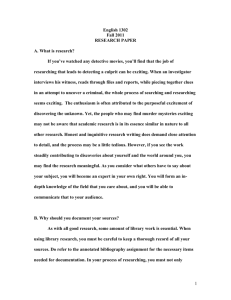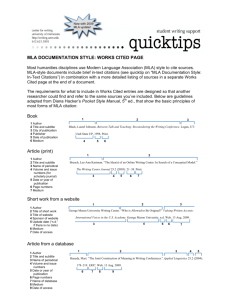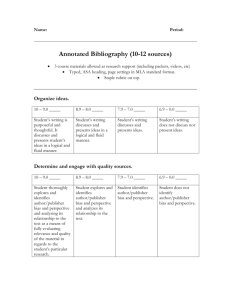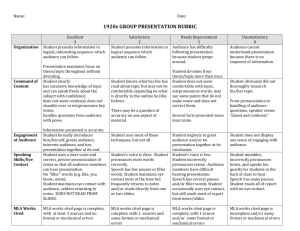Works Cited
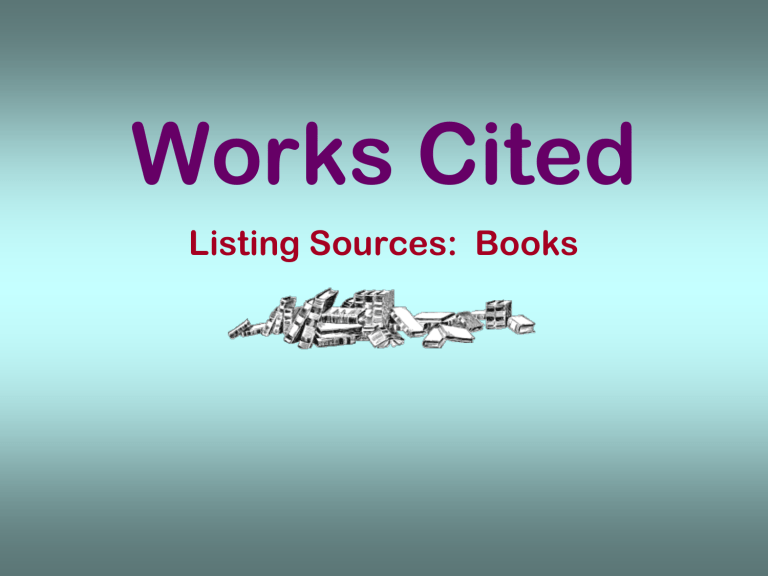
Works Cited
Listing Sources: Books
All papers which contain in-text citations require a bibliography. The Modern Language Association recognizes two types of bibliography:
1.
The shorter Works Cited , which only lists works referenced in your essay.
2.
The longer Works Consulted , which lists all works you may have examined during the preparation of your text.
For our purposes, the simpler Works Cited page will suffice.
The Works Cited page is the last page (or more) of your essay.
The page is numbered, just like all the other pages of your essay, and the title will be set up as follows:
Works Cited
Hershberger 8
Order of Operations
Book entries are alphabetized in a specific order:
1.
Author, by last name.
2.
Minor title.
3.
Major title.
4.
Date of original publication.
5.
Place of publication.
6.
Publisher.
7.
Year of publication.
8.
Pages cited.
This order applies, with minor variations, to most other types of entry.
Bettelheim, Bruno. The Uses of Enchantment: The Meaning and
Importance of Fairy Tales . 1976. New York: Vintage, 1989. 6-7.
Locating Bibliographic Information
To locate key bibliographic information, open your book to its main title page. A detailed record of publication data will be found on the back of this page.
Hershberger 1
Works Cited
Bettelheim, Bruno. The Uses of Enchantment: The
Meaning and Importance of Fairy Tales . 1976.
New York: Vintage, 1989.
Sale, Roger. Fairy Tales and After: From Snow White to E.B. White . Cambridge, Massachussetts:
Harvard UP, 1979. 37-8.
Zipes, Jack. Don’t Bet On the Prince: Contemporary
Feminist Fairy Tales in North America and England .
1987. New York: Routledge, 1989.
No matter what you may have been taught in the past,
Works Cited entries are neither numbered nor bulleted.
Non-Book Sources
There are, of course, specific methods for citing newspapers, periodicals, magazines, videos, television programs, films, works of art, interviews, Web sites, the Internet, maps, documents, tapes, etc.
Our concern today is books.
Remember, your reference texts outline appropriate citation methods for all sources and you should, therefore, familiarize yourself thoroughly with the MLA section of The Norton Field Guide to Writing .
Should the Field Guide fail to answer your questions, the MLA
Handbook is available in the reference section of the Library.
No normal human being can be expected to remember all of the ins and outs of MLA style
— particularly as these evolve over time to embrace new technologies and needs. When in doubt, turn to the MLA Handbook , or to your Writer’s Reference .
